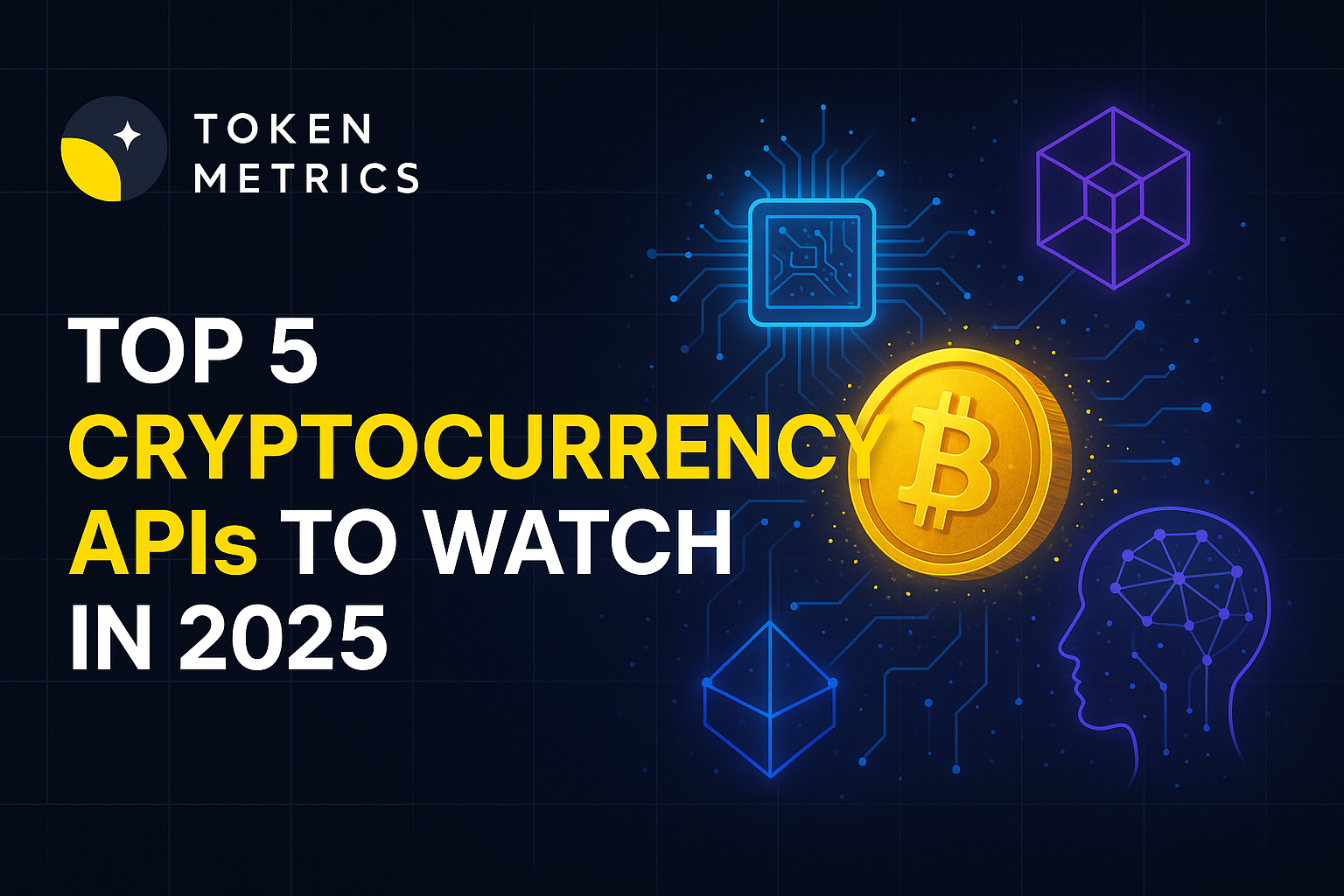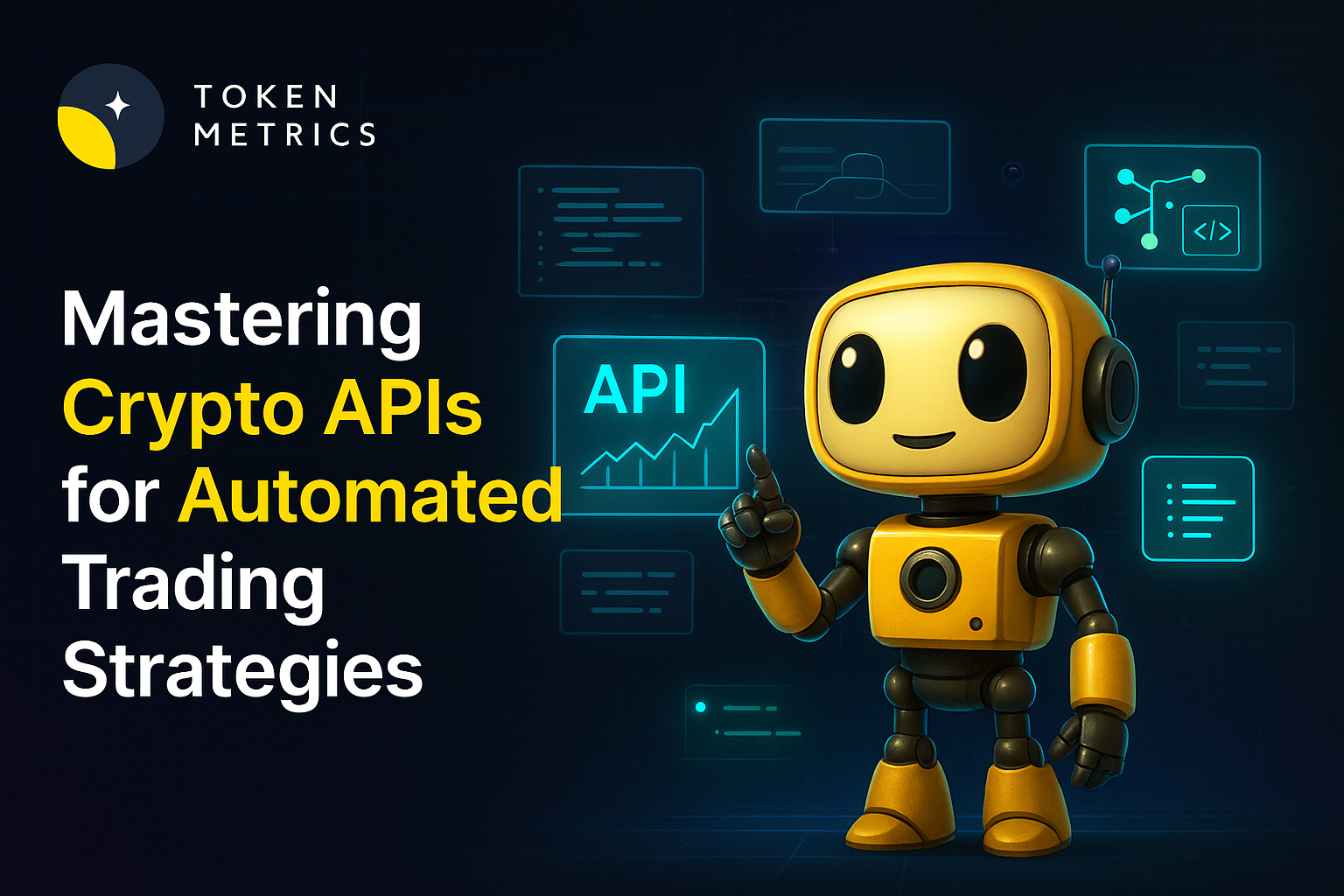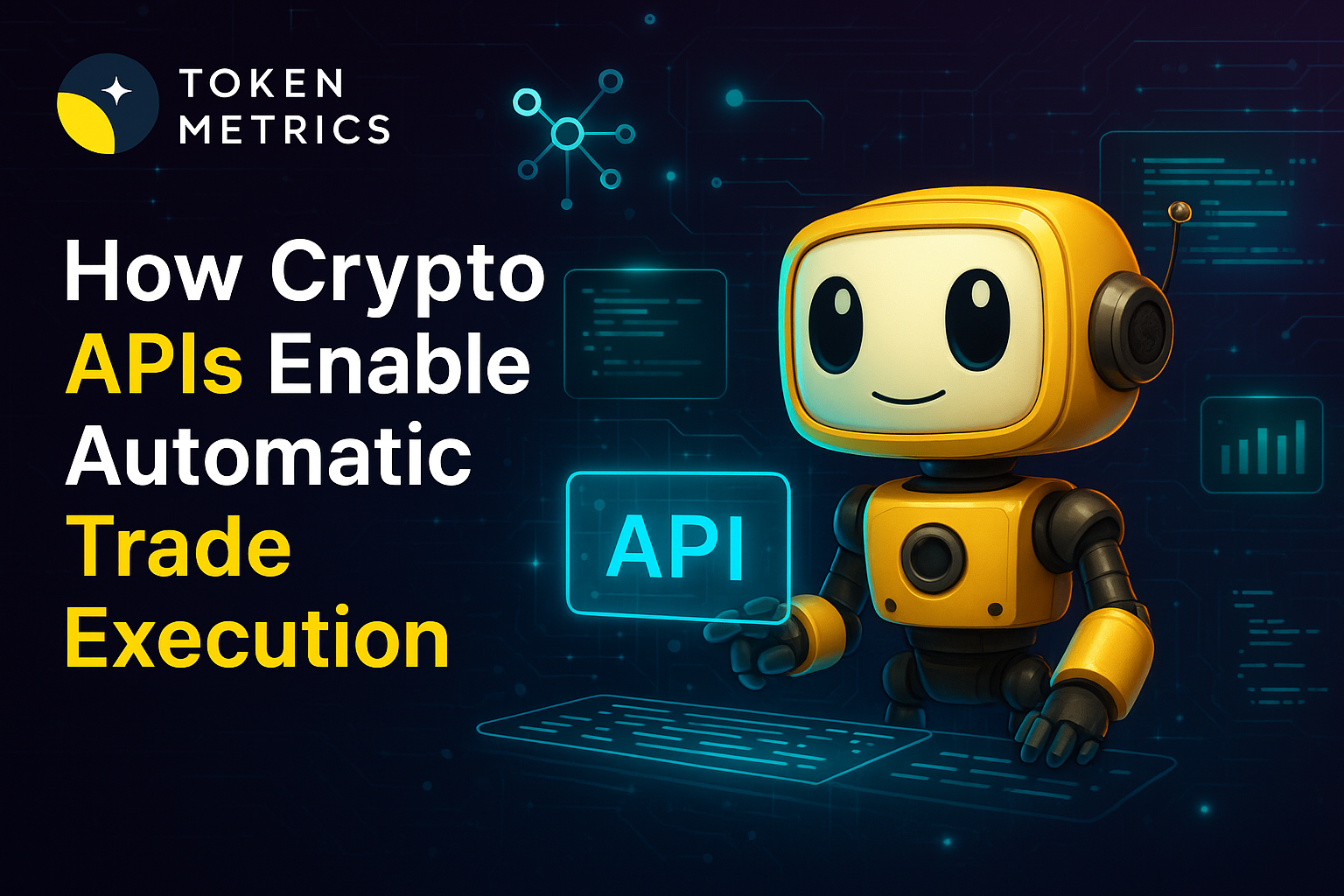Top 5 Cryptocurrency APIs to Watch in 2025

Introduction
As the blockchain and crypto ecosystems continue to evolve rapidly, access to reliable and comprehensive cryptocurrency data through APIs remains vital for developers, analysts, and businesses. APIs facilitate the integration of real-time market data, historical analytics, and on-chain information into applications and services. With 2025 shaping up to further advance the crypto landscape, selecting the right crypto API can significantly impact the quality of data-driven insights and automation capabilities.
This article explores the 5 best cryptocurrency APIs in 2025, focusing on their features, data coverage, and analytical strengths to support developers and researchers in making informed technology choices. We also highlight the role of AI-driven tools like Token Metrics API in enhancing crypto data research.
Criteria for Selecting Cryptocurrency APIs
Choosing the best crypto API requires evaluating several key factors beyond mere price feeds. Important criteria include:
- Data Reliability: Consistent uptime, accurate and up-to-date pricing, and comprehensive market coverage across numerous exchanges and tokens.
- Data Variety: Inclusion of spot prices, historical data, order books, wallet and on-chain metrics, social sentiment, and news feeds.
- Latency and Speed: Especially for trading bots and arbitrage systems, low-latency API responses are critical.
- AI and Analytical Integration: Some APIs, such as the Token Metrics API, incorporate AI-driven analytics and ratings to provide deeper insights.
- Documentation and Support: Quality of developer resources and responsive support channels.
1. Token Metrics API
The Token Metrics API stands as a leading choice for 2025. It combines traditional market data with AI-powered analytics, fundamental scores, and predictive signals. This fusion allows users to enrich their platforms with both raw data and research-grade insights.
Key Features:
- Real-time price and volume data across multiple exchanges.
- AI-derived token ratings and forecasts based on machine learning models.
- Sentiment analysis sourced from social channels integrated within the API.
- Comprehensive documentation tailored for both research and trading platform integration.
Further, Token Metrics offers a complementary crypto trading platform that leverages this API, showcasing practical implementation in trading research.
2. CoinGecko API
CoinGecko remains one of the most popular free and paid crypto APIs, favored for its extensive token database and community-focused data. It excels at delivering real-time pricing, volume data, and detailed token metadata including developer activity and liquidity scores.
Key Features:
- Access to over 13,000 cryptocurrencies with live prices and market capitalization.
- Historical price charts and market dominance data.
- DeFi and NFT data endpoints increasingly incorporated.
- Reliable and well-documented REST API endpoints.
3. CryptoCompare API
CryptoCompare has built a reputation for combined market data and social sentiment in a single API package. Its focus extends beyond spot prices to include derivatives and exchange-level metrics, making it useful for comprehensive market analysis.
Key Features:
- Real-time and historical crypto pricing.
- On-chain blockchain stats and addresses data.
- Social media sentiment scores and trending news.
- Extensive global exchange coverage and order book snapshots.
4. Nomics API
Nomics delivers high-quality primary market data emphasizing transparency and accuracy. Their API offers aggregated pricing, supply data, and exchange volume metrics with premium tiers providing enhanced data granularity.
Key Features:
- Cleaned and gapless historical data across thousands of tokens.
- Proprietary liquidity and transparency scores for exchanges and assets.
- Support for institutional-grade data integration.
- Focus on raw market data rather than derived metrics.
5. Glassnode API
Glassnode is a leader in on-chain analytics, offering APIs that provide deep blockchain-level insights beyond market prices. Its datasets include wallet behavior, transaction flows, and network health indicators, making it ideal for fundamental blockchain research.
Key Features:
- On-chain metrics covering multiple blockchains.
- Indicators like active addresses, transaction volumes, and hodler distribution.
- Data feeds designed for integration into research platforms and dashboards.
- Subscription plans with tiered access to advanced metrics.
How to Use Cryptocurrency APIs Effectively
Utilizing crypto APIs efficiently involves defining clear objectives—whether for portfolio tracking, app development, or research. Developers and analysts should consider combining multiple data sources to obtain a multidimensional view of the markets.
Incorporating AI-based analytics, such as those offered through the Token Metrics API, can augment traditional price and volume data by providing predictive insights and risk assessments. This integration supports more nuanced research and decision-making processes.
It is also important to monitor API usage limits, latency, and data update frequencies to ensure smooth operation of dependent applications.
Conclusion
In the dynamic and data-intensive world of cryptocurrency, accessing robust and feature-rich APIs is fundamental to gaining insights and building competitive products. The top 5 cryptocurrency APIs for 2025 highlighted here present options catering to varied needs—from real-time market data to advanced AI-enabled analytics and on-chain metrics.
Among them, the Token Metrics API distinguishes itself by combing comprehensive crypto market data with AI-enhanced predictive research, making it a valuable resource for projects seeking to integrate both fundamental and technical perspectives.
Those engaged in crypto development and research may benefit from exploring these APIs in alignment with their specific analytical or operational requirements.
Disclaimer
This content is for educational and informational purposes only. It does not constitute financial, investment, or legal advice. Users should conduct their own research and consult professionals before relying on any cryptocurrency data or platforms.
Create Your Free Token Metrics Account

.png)




%201.svg)
%201.svg)


%201.svg)










.svg)




.png)